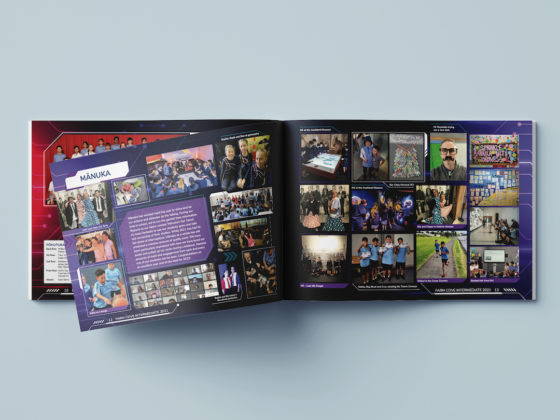A successful school course or curriculum guide should contain plenty of information in a digestible format. Curriculum guides require lots of detail and interlaced subjects. So it can be tricky to know how to best present all the facts whilst still looking appealing!
Here are some tips and ideas for your school curriculum guide to help students choose subjects, understand their learning pathways and set them up for future careers!
Digital or Print Booklets
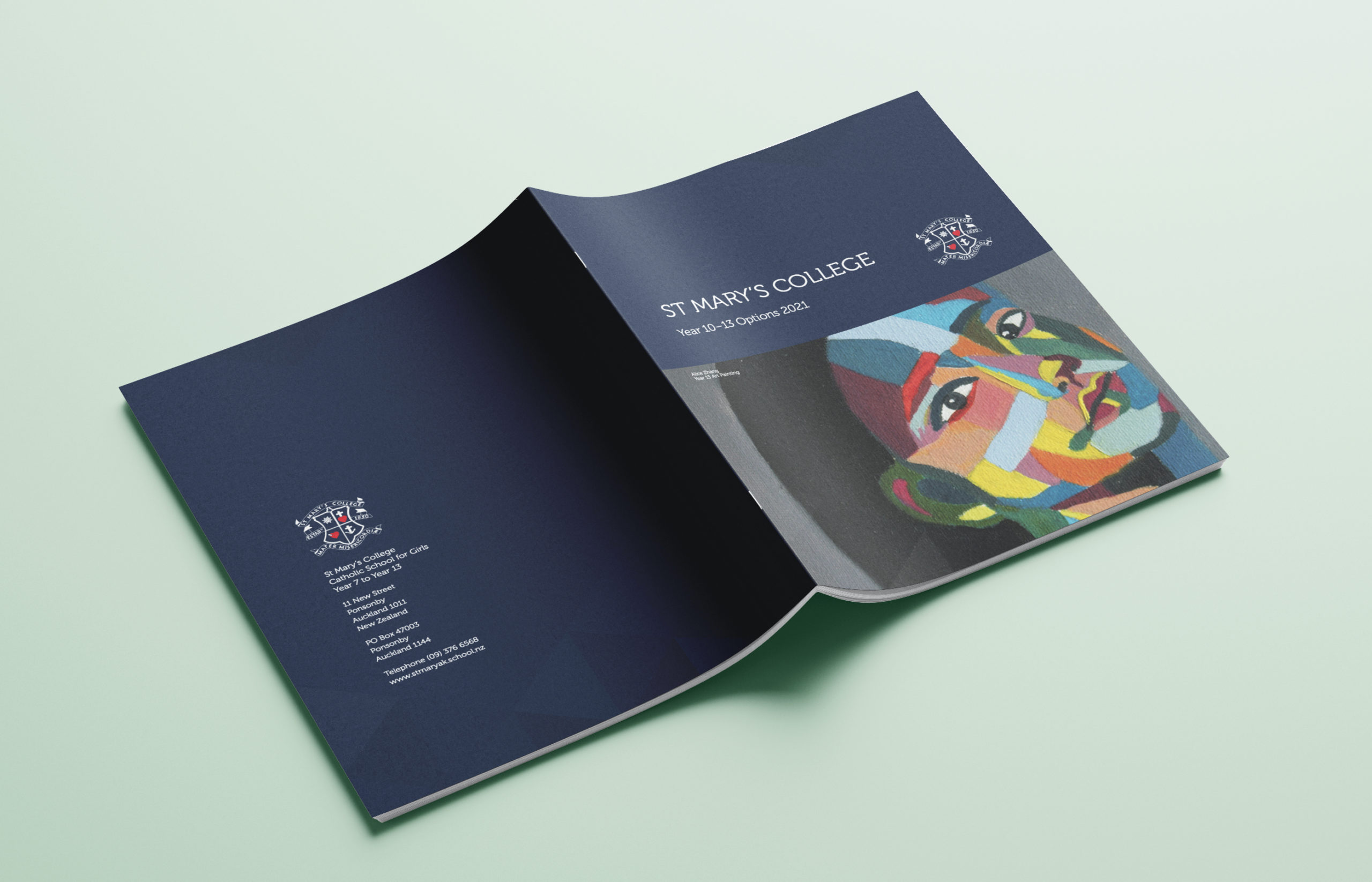
St Mary’s College Year 10-13 Options 2021
An academic guide can be either a printed booklet, digital, or both! Each format has its benefits. An online version means the information is always easy to access with no worry about students misplacing their booklets. However, a print version offers a tactile experience, with the ability to flip between pages and read alongside family.
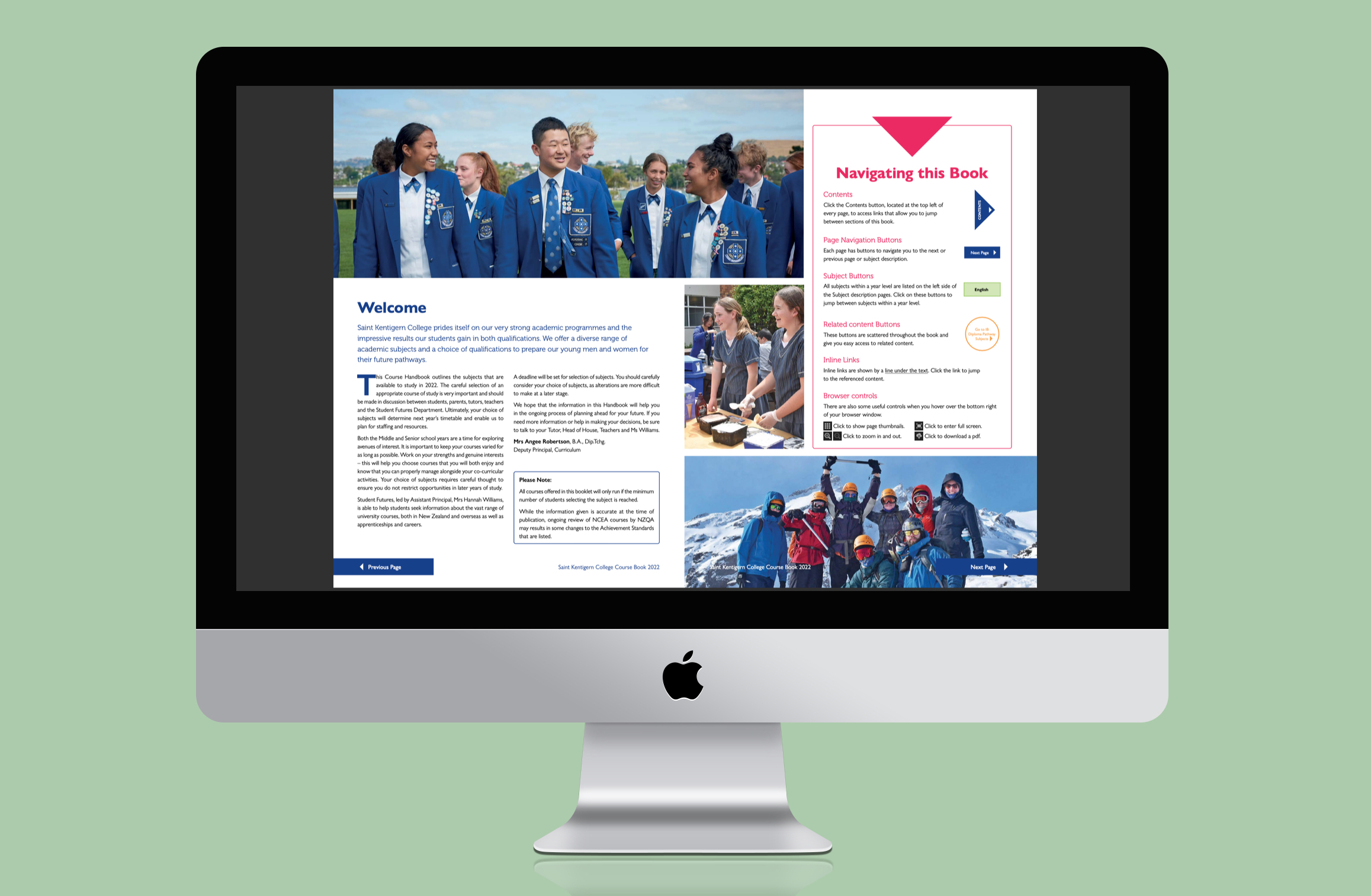
Saint Kentigern College Course Book 2022
If you’re creating a digital booklet, include some directions on navigating the pages to ensure readers get the best user experience.
A Broad Curriculum Overview
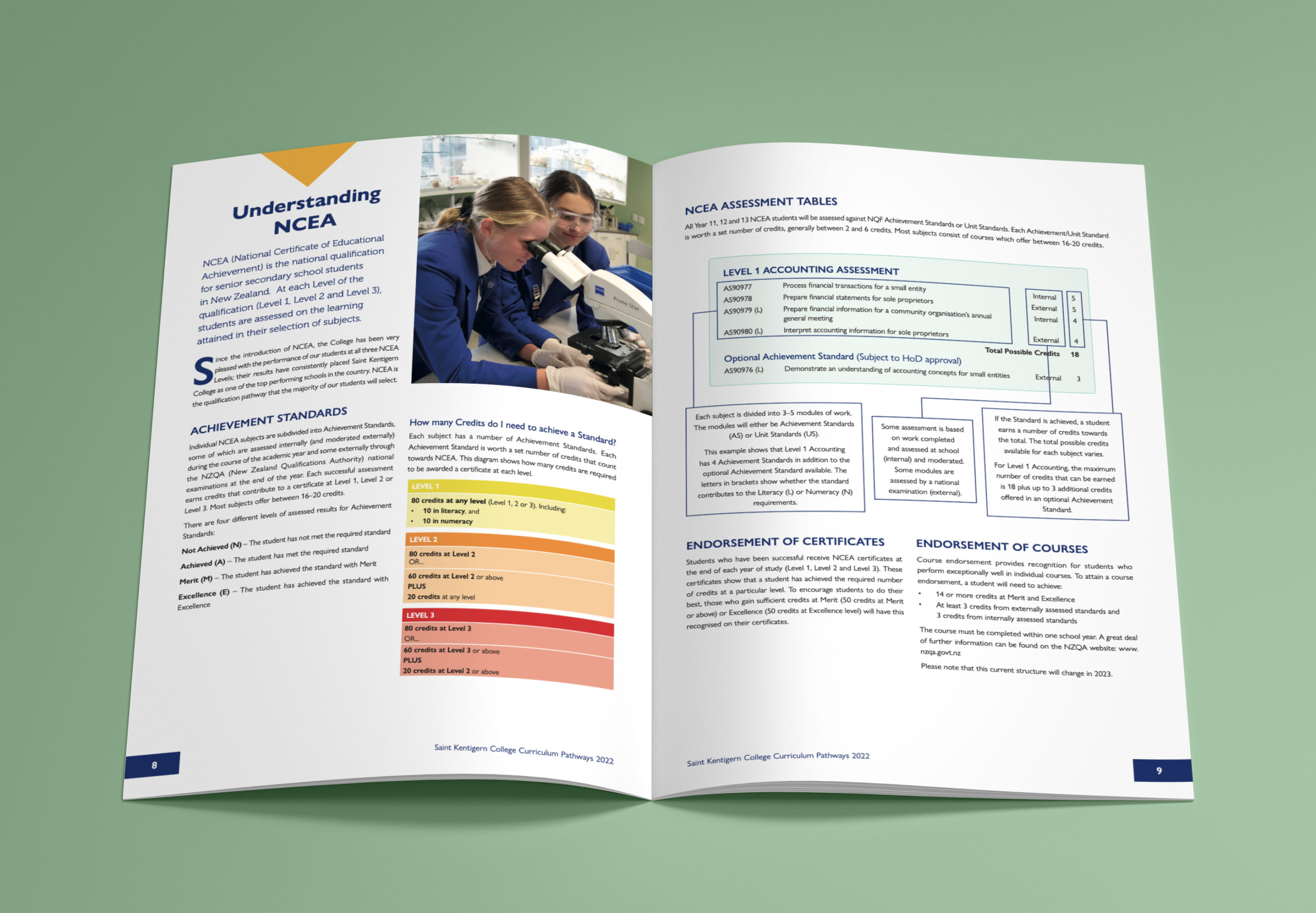
Include some brief details early on about how subjects work at your school. Explain NCEA, IB or other pathways on offer and what is expected from students to achieve at each level.
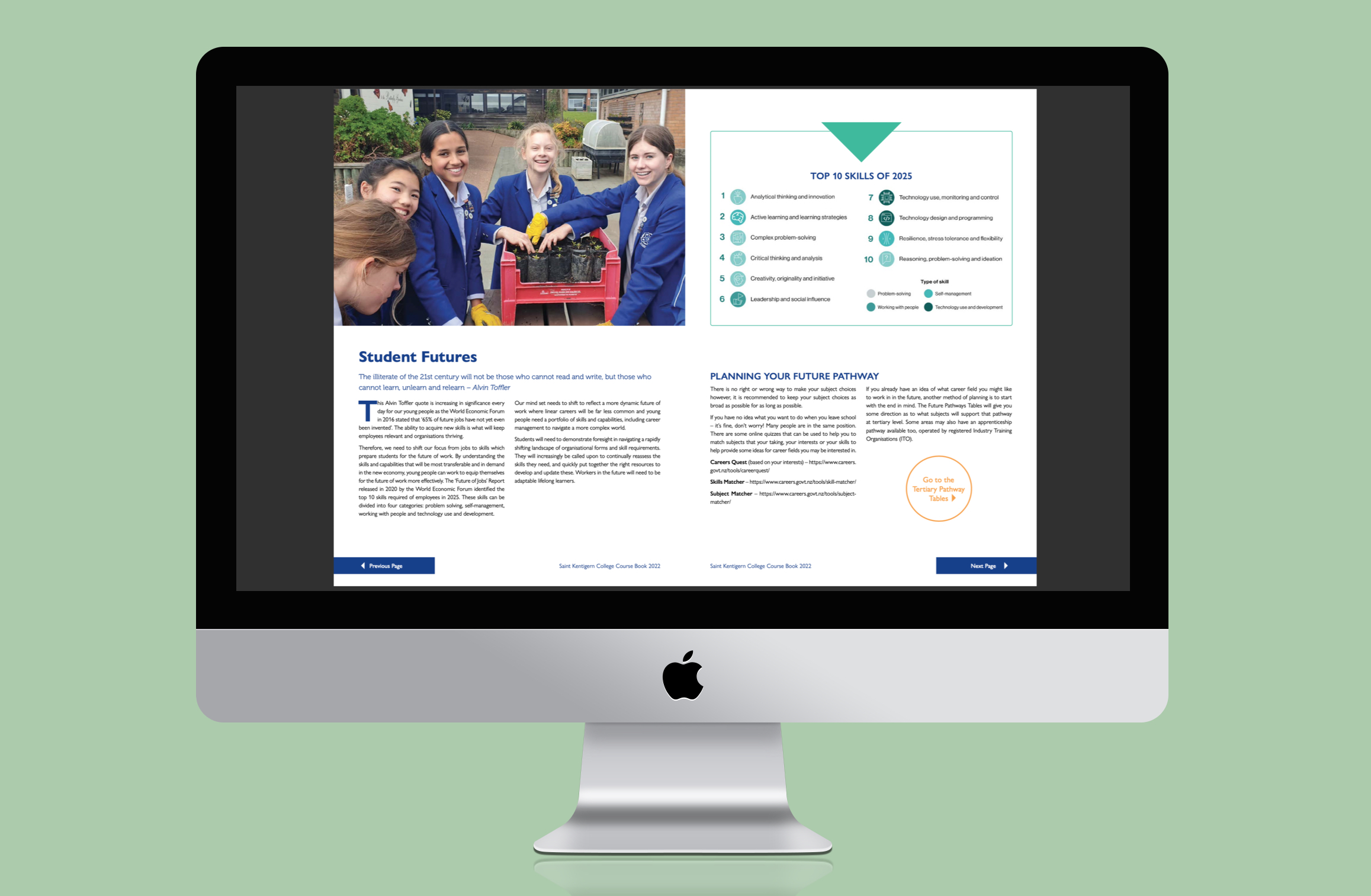
Saint Kentigern College Course Book 2022
Start your curriculum guide off with broad topics to ease your readers into the more complex information. Consider including a page about skills that will be useful for future careers or some general facts about learning.
Beyond High School
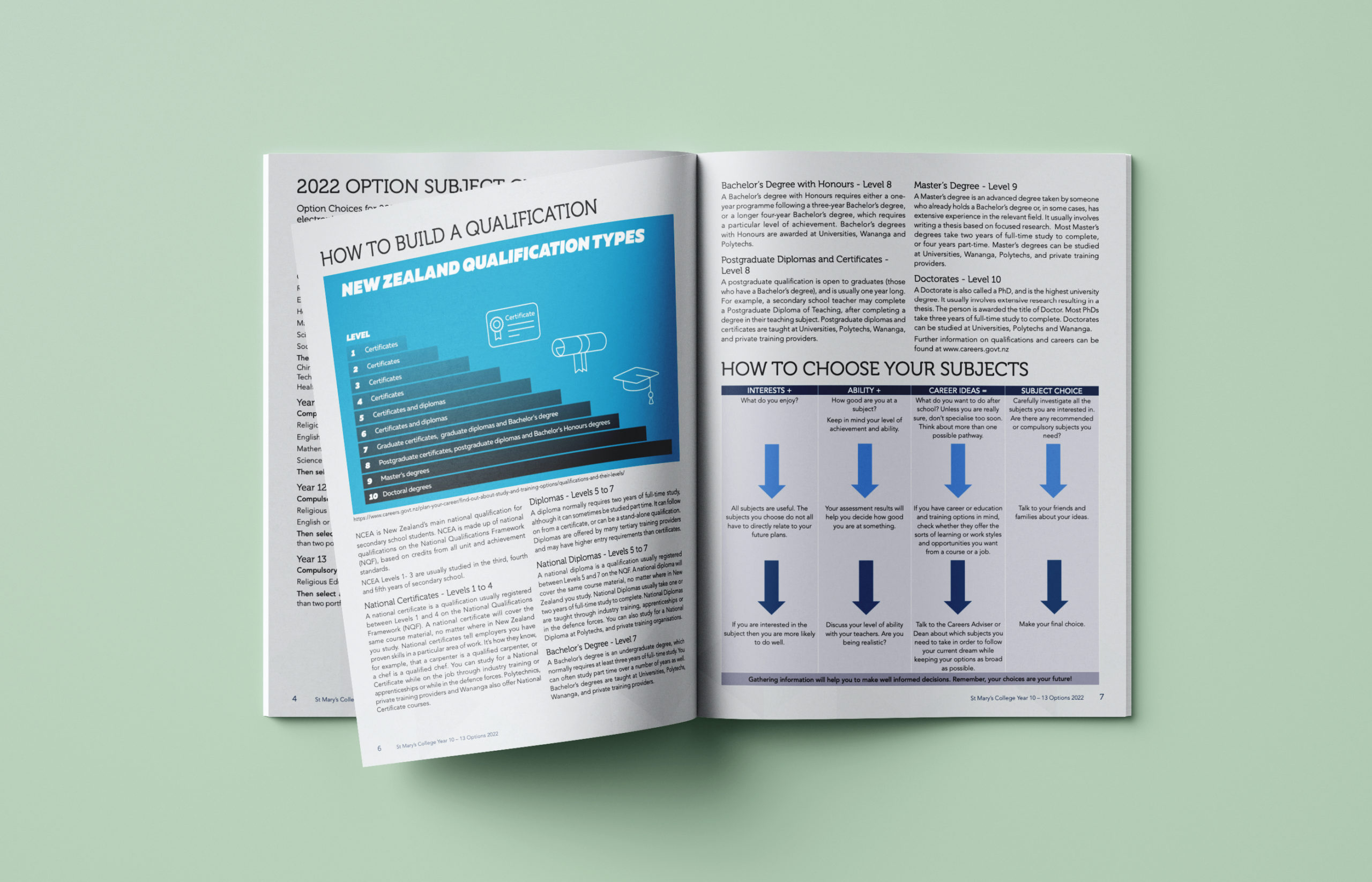
St Mary’s College Year 10-13 Options 2022
Before diving into requirements and learning pathways, spend a bit of time explaining how students should go about choosing subjects. How can they combine their interests with what is on offer and could lead to a career?
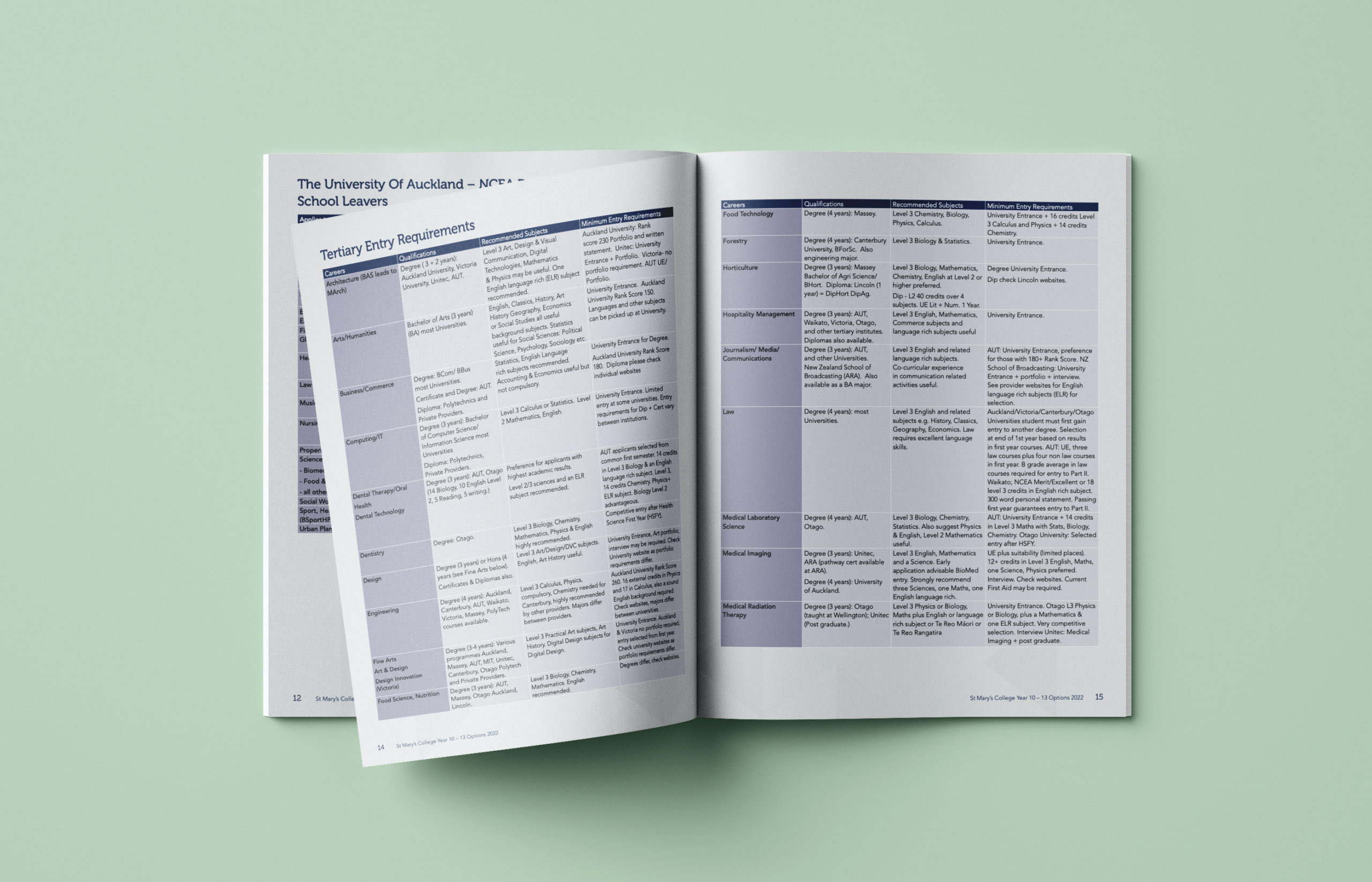
St Mary’s College Year 10-13 Options 2022
There are many universities and careers to choose from, but it’s not always easy to know what is needed to apply. Add a few pages about possible careers, what degrees they will need, and which subjects to take to ensure they meet entry requirements.
Colour-Coded Categories
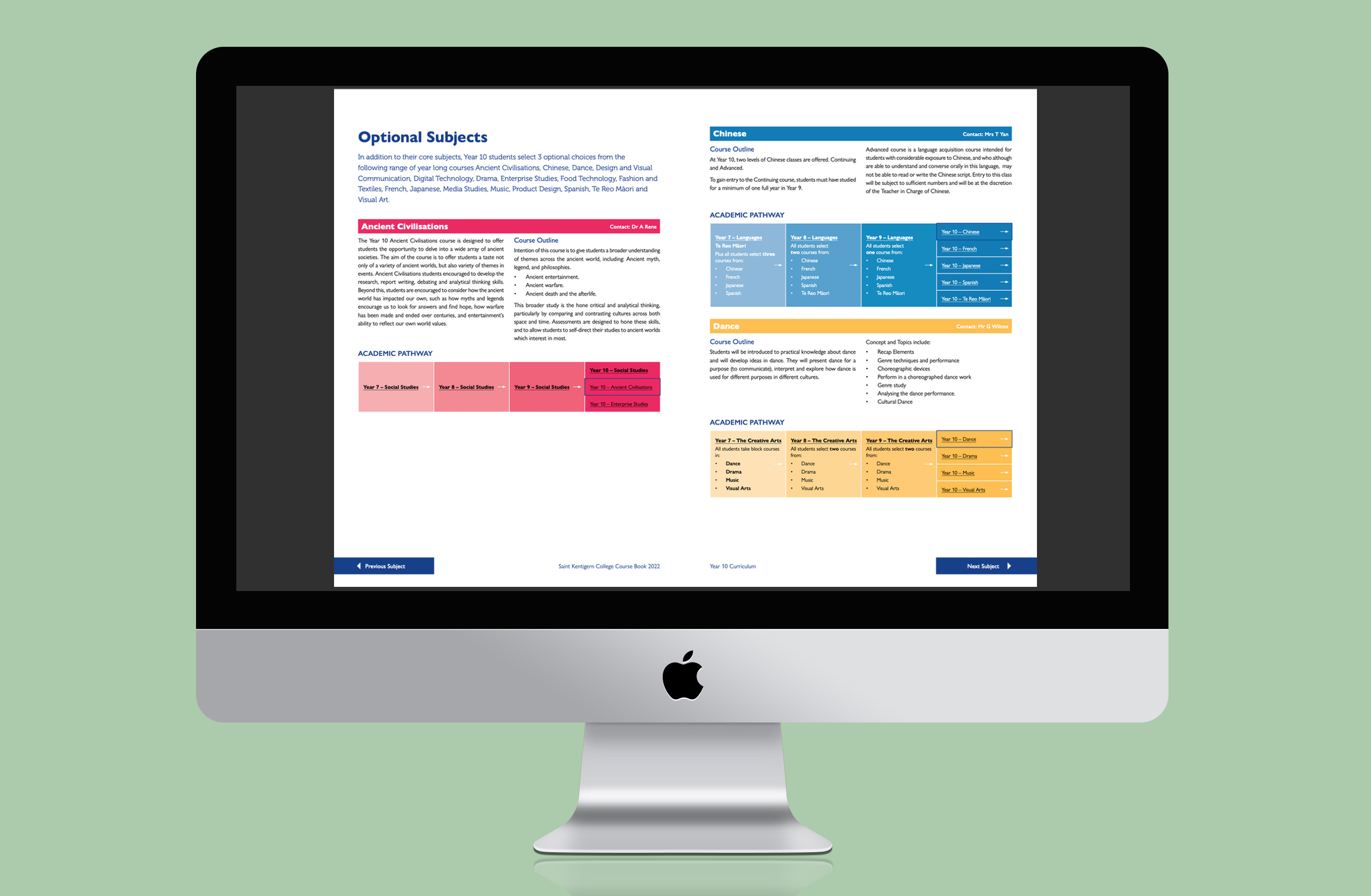
Saint Kentigern College Course Book 2022
Curriculum guides are full of information, so they can be hard to follow. It’s easy to get lost or find it complicated to understand learning pathways and subject requirements. Use colours to signify different classes or NCEA levels to help readers process all the information in your booklet.
Flowcharts & Subject Pathways
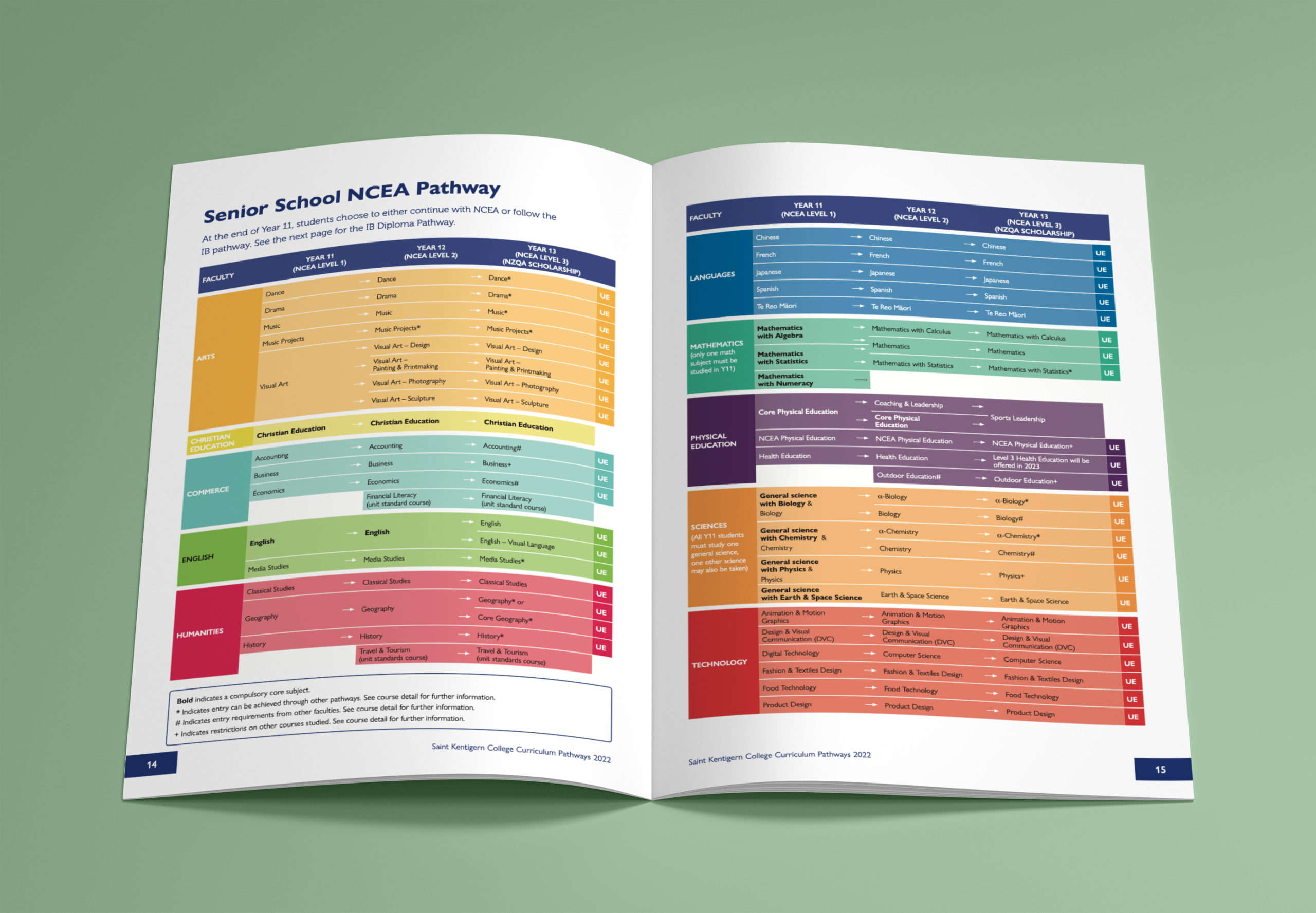
Saint Kentigern College Curriculum Pathways 2022
Include some easy to follow flowcharts that show subject prerequisites and the various ways students can get there. Visual diagrams are easier to follow and refer to than written sentences.
School Photography
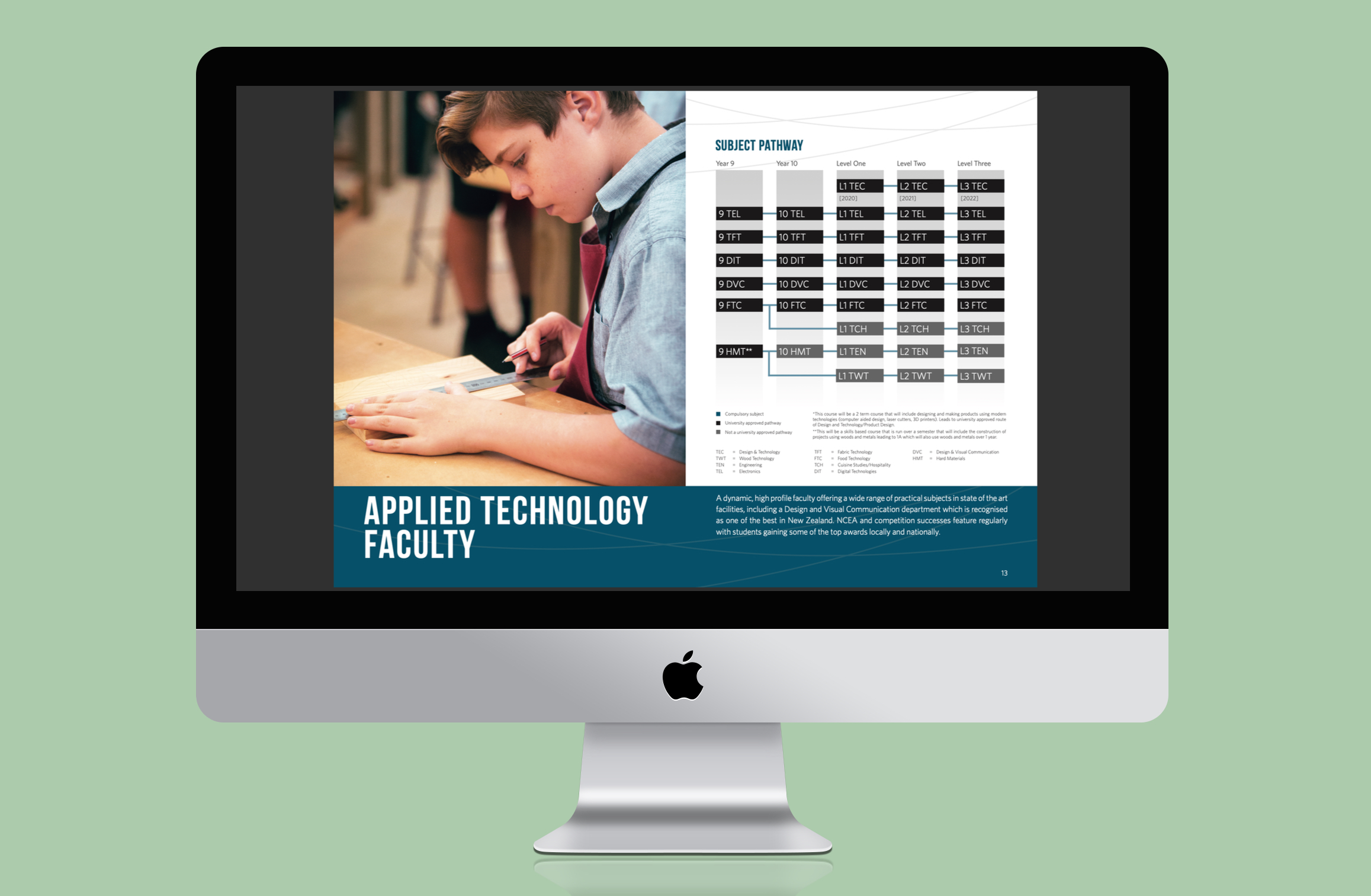
Long Bay College Academic Guide 2019
Break up the detailed course information and subject flowcharts with some photography. Nice imagery will help your curriculum guide look welcoming instead of overwhelming!
If you’d like help designing or bringing your curriculum guide to life, Spacific Creative can help! Reach out for information on our print and online options.



